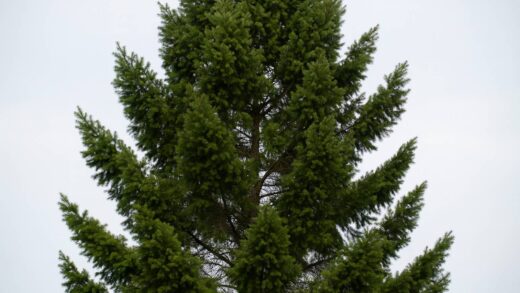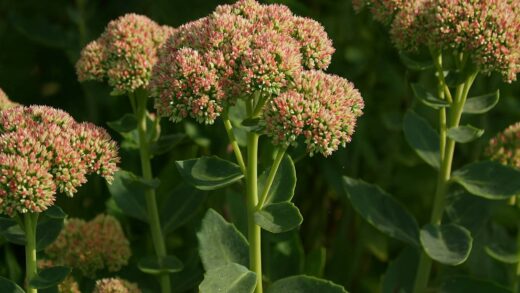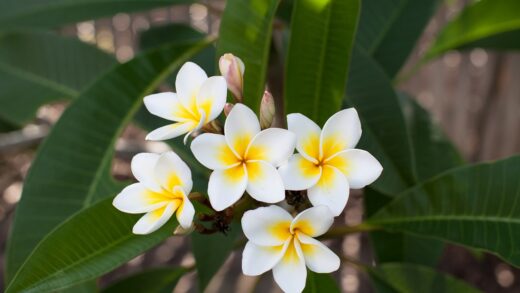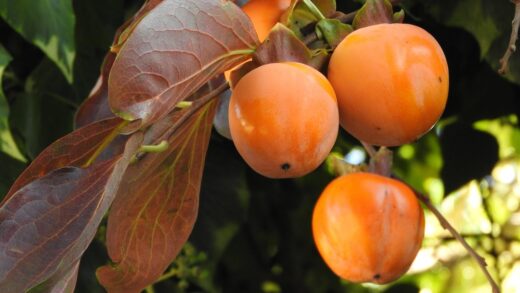Understanding the specific water requirements of the clusius-tulip is fundamental to its successful cultivation, as its irrigation needs are deeply tied to its natural life cycle and native habitat. This is not a plant that thrives on constant moisture; in fact, its survival strategy is based on a distinct cycle of wet springs followed by dry summers. Providing the right amount of water at the right time is a delicate balance that, when mastered, ensures the longevity and perennial nature of these exquisite tulips. Mismanaging irrigation is one of the most common reasons for failure, often leading to bulb rot and the gradual decline of the plant. Therefore, a thoughtful and observant approach to watering is far more beneficial than a rigid, routine schedule.
The core principle to remember is that the clusius-tulip’s life is divided into two distinct phases regarding water: an active growth period in the spring and a dormant period in the summer. During the spring, from the moment the first shoots emerge until the foliage begins to yellow, the plant requires consistent moisture to fuel its rapid growth, leaf development, and flowering. This is the time to ensure the soil does not dry out completely. This mimics the snowmelt and spring rains of its mountainous origins, providing the necessary resources for the plant to complete its annual display and store energy for the following year.
In stark contrast, the summer months are a time for drought. Once the foliage has completely died back, the bulb enters a state of dormancy, and it is absolutely crucial that the soil remains dry. This period of being “baked” in warm, dry soil is not merely a survival tactic; it is an essential requirement for the flower bud to mature properly within the bulb for the next season. Applying water during this dormant phase is highly detrimental and is the most certain way to induce bulb rot, a fatal condition from which the bulb cannot recover. The transition between these two phases must be managed carefully.
Consequently, the gardener’s role is to supplement natural rainfall when necessary during the spring growth phase and to strictly withhold water during the summer. This requires careful site selection, placing the tulips where they will not receive runoff from irrigation systems intended for other, thirstier plants. It also demands a hands-on assessment of soil moisture rather than watering by the calendar. By understanding and respecting this natural wet-dry cycle, the gardener can provide the ideal conditions for the clusius-tulip to not only survive but to thrive and naturalize for years to come.
Watering during the active growing season
During the spring, which is the active growing season for the clusius-tulip, maintaining adequate soil moisture is critical for healthy development. From the emergence of the first leaves through the flowering period and until the foliage begins to fade, the plant is actively photosynthesizing and requires a consistent supply of water. This period of growth is rapid and energy-intensive, and a lack of moisture can result in stunted growth, smaller or fewer flowers, and a reduced ability for the bulb to store energy for the following year. The soil should be kept evenly moist, but never waterlogged.
More articles on this topic
The frequency of watering will depend heavily on the climate, soil type, and natural rainfall. In regions with reliable spring rains, supplemental irrigation may not be necessary at all. However, during dry spells, it is important to intervene. The best way to determine if watering is needed is to check the soil moisture manually. Insert a finger into the soil near the plants; if the top few centimeters feel dry to the touch, it is time to water. This direct assessment is far more reliable than adhering to a fixed schedule.
When irrigation is necessary, it is best to water deeply and infrequently rather than lightly and often. A deep watering encourages the plant to develop a more extensive root system, making it more resilient. Water the soil at the base of the plants, avoiding the foliage and flowers as much as possible. Watering in the morning is also preferable, as it allows any moisture that does get on the leaves to evaporate quickly in the sun, which helps to reduce the risk of fungal diseases taking hold.
As the flowers begin to fade and the foliage starts its process of yellowing, it is time to gradually reduce the frequency of watering. This tapering-off period signals to the bulb that the dry dormant season is approaching. Continuing to water heavily as the plant is preparing for dormancy can be counterproductive and may increase the risk of rot. This careful management of the transition from the wet growing season to the dry dormant period is a key aspect of successful long-term cultivation.
The critical summer dormancy period
The summer dormancy period is the most critical phase where proper water management, or rather the lack thereof, determines the survival of the clusius-tulip. Once the foliage has completely withered and died back, the bulb requires a period of warm, dry conditions to mature and prepare for the next growing season. This is a non-negotiable requirement that is deeply ingrained in the genetics of the plant, reflecting its adaptation to the hot, dry summers of its native habitat. During this time, from late spring through to the early autumn, all supplemental irrigation must be stopped.
More articles on this topic
The primary danger of watering during summer dormancy is bulb rot. A dormant bulb is not actively growing and has no means of using or transpiring water. If the soil around it is moist, it creates an anaerobic environment that is perfect for the proliferation of fungi and bacteria that cause decay. A healthy, firm bulb can turn to a soft, mushy mass in a surprisingly short amount of time if kept in damp soil during its dormant phase. This is why excellent drainage is so fundamentally important.
This need for summer dryness has significant implications for garden design and plant placement. Clusius-tulips should not be planted in beds that are regularly irrigated throughout the summer, such as traditional mixed borders with thirsty annuals or perennials. They are much better suited to rock gardens, gravel beds, or areas of the garden that are naturally dry during the summer months. Planting them alongside other drought-tolerant Mediterranean or alpine plants that share similar requirements is an excellent strategy for creating a cohesive and low-maintenance garden.
The gardener must be vigilant about indirect watering as well. This includes being mindful of lawn sprinklers that may overspray onto the tulip bed or runoff from adjacent, more heavily watered areas. Creating a slight berm or raised area for the tulips can help to divert excess water and ensure their dormant home remains dry. Respecting this need for a summer bake is the secret to ensuring that the clusius-tulip not only returns the following year but also multiplies and naturalizes over time.
Irrigation at the time of planting
The only time that watering is essential outside of the spring growing season is immediately after the bulbs are planted in the autumn. Once the bulbs have been placed at the correct depth and the soil has been backfilled, a thorough and deep watering is highly beneficial. This initial soaking serves several important purposes that are crucial for getting the bulbs off to a good start. It helps to settle the soil firmly around the bulbs, eliminating any large air pockets that could otherwise leave the roots to dry out.
This first watering also provides the necessary moisture to trigger the start of root development. Although the top growth will not appear until spring, the bulbs will begin to grow roots throughout the autumn and early winter as long as the soil temperature is above freezing. Establishing a strong and healthy root system before the ground freezes solid is vital for the plant’s ability to anchor itself and to efficiently absorb water and nutrients once growth commences in the spring. A well-rooted bulb is a more resilient and vigorous bulb.
After this initial watering at planting time, further irrigation during the autumn and winter is generally not required, unless you are experiencing an exceptionally prolonged and severe drought. In most temperate climates, the natural autumn and winter precipitation will provide all the moisture that the dormant bulbs need. The goal is to have moist, but not saturated, soil during the root development phase. Overwatering during this period can be just as detrimental as it is in the summer, potentially leading to rot before the bulb even has a chance to sprout.
Therefore, the approach should be to water once, deeply, at the time of planting, and then to let nature take its course. Monitor the weather and soil conditions, but resist the temptation to provide supplemental water unless it is absolutely necessary due to extreme and unusual dryness. This targeted application of water at the most critical moment gives the clusius-tulip everything it needs to prepare for a spectacular spring display.
Special considerations for container cultivation
Growing clusius-tulips in containers offers an excellent way to provide the precise conditions they need, but it also requires a more attentive approach to watering. The soil in pots and containers dries out much more quickly than garden soil, so more frequent monitoring is necessary during the spring growing season. While the principle remains the same—keep the soil evenly moist but not waterlogged—the application will need to be more regular. Check the pots every few days, and water thoroughly whenever the top inch or two of the potting mix feels dry.
When watering container-grown tulips, it is essential to water until you see excess liquid draining from the holes in the bottom of the pot. This ensures that the entire root ball has been moistened and also helps to flush out any accumulated mineral salts from the potting mix. It is crucial that the container has ample drainage holes to prevent water from stagnating at the bottom, which would be fatal to the bulbs. After watering, do not allow the pot to sit in a saucer of water for an extended period.
Just as with garden-grown specimens, the summer dormancy period is a time for dryness. Once the foliage has died back, move the container to a location where it will be protected from summer rains, such as under the eaves of a house or in a garden shed. The potting medium should be allowed to dry out completely and remain that way throughout the summer. This mimics the summer baking they require and is essential for their survival and re-flowering in containers.
In the autumn, you can begin to reintroduce a small amount of moisture to the pot to signal the end of the dormancy period. A light watering in September or October can help to initiate new root growth. However, do not keep the soil consistently wet; it should be allowed to dry out between waterings. Natural rainfall may be sufficient, but in dry autumns, an occasional watering will ensure the bulbs are ready for the winter ahead.




















